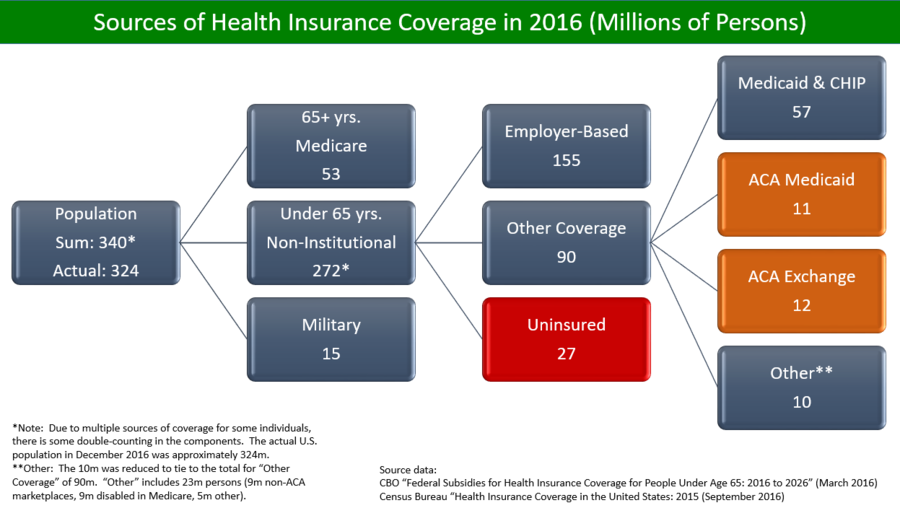Uninsured Patients
What do you think?
Health Insurance Coverage post implementation of ACA
As compared to the number of insured population (approximately 48 million) in 2012, the implication of Affordable Care Act managed to get down that number to almost half by 2016, with 10% of under-65 population (28 million) being uninsured. Yet, a large group of population remain uninsured and a lot of it is attributable to the high cost of care in the United States. This is also leading to increased mortality rates (about 30-90 thousand deaths per year).

Overview of the current healthcare insurance coverage in United States
- There were 155 million with employer-based coverage, 90 million with other coverage, and 27 million uninsured.
- Of the 90 million with other coverage, 57 million were covered by Medicaid and Children’s Health Insurance Program (CHIP), 12 million were covered by the ACA/Obamacare exchanges, 11 million were covered by the ACA Medicaid expansion, and 10 million had other coverage, such as private insurance purchased outside the ACA exchanges.
- Of the 12 million on the ACA exchanges, 10 million received subsidies and 2 million did not.
- Of the 27 million uninsured, 21 million (79%) were U.S. citizens while 6 million (21%) were non-citizens, including both documented and undocumented immigrants. In 2015, 45% of the uninsured were white, 32% were hispanic, and 15% were black.
- Approximately 15 million institutional (military) personnel were covered by the Veteran’s Administration in 2015.
- The uninsured rate fell from a peak of 18.2% in 2010 to 10.5% by 2015, due primarily to ACA/Obamacare along with improvements in the economy.
- States that expanded Medicaid under Obamacare had lower uninsured rates than states that did not.
- Inability to afford insurance was the primary reason cited by persons without coverage (46%)